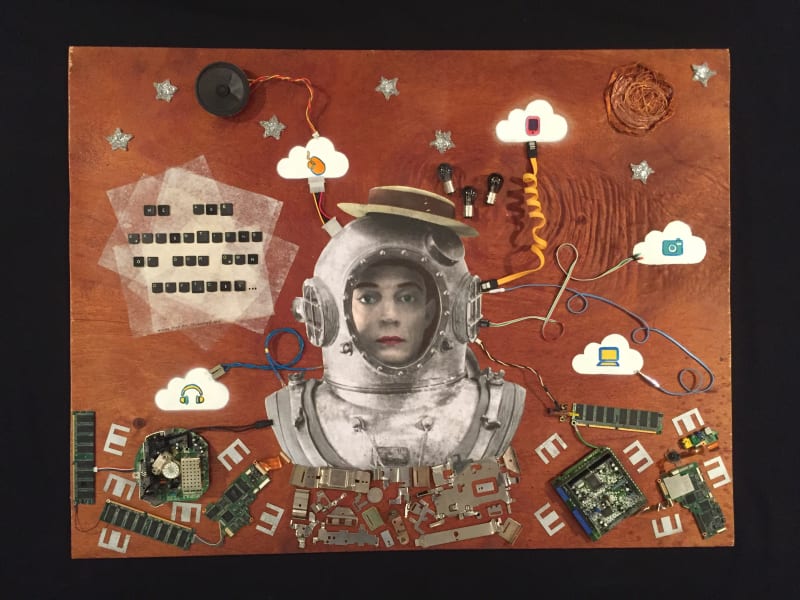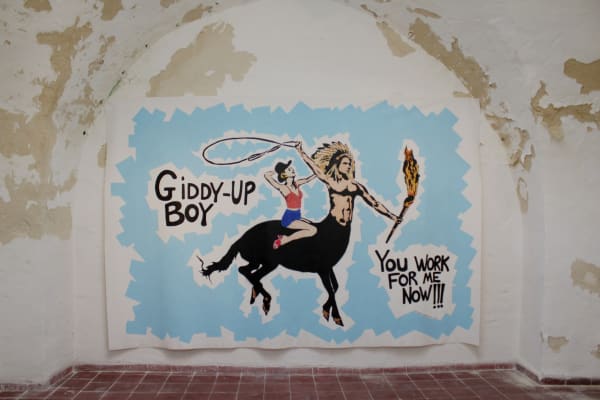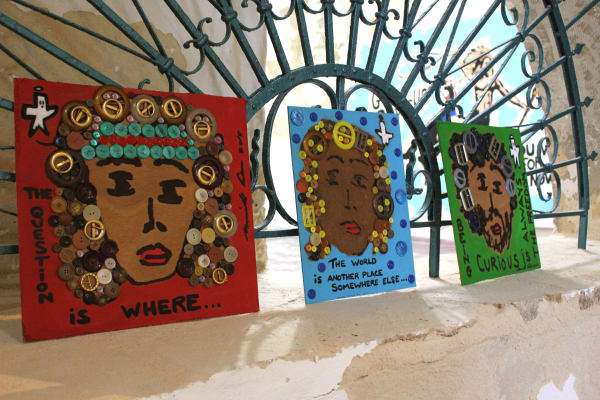Murielle Street Art: The Talkies
Omer Tiroche Gallery in collaboration with Tiny Tiny Gallery are proud to present a Solo exhibition of the Canadian street artist Murielle Street Art. Murielle is currently based in Israel and produces murals in the streets of Tel Aviv, and is the owner of Tiny Tiny Gallery. As a street artist Murielle believes her art is for the masses and reflects the ongoing changes of technology, society, relationships and beauty. She is fond with creating series of artworks on one subject and showcasing them in the street of Tel Aviv, stimulating a dialogue between her art and the passerby.
One of the main changes she focuses on is the introduction of sound to the film industry at the beginning of the 20th century. She created the series Dismantling Technology featuring the silent movie stars of that era. The first American musical film was produced in 1927; it had synchronised sound and marked the change from silent movies, to the age of “Talkies”. In the book The Oxford History of World Cinema, the historian Karel Dibbets wrote that the new technology produced panic and confusion; it had proved to be disastrous for many actors, with many of them unable to adapt to the format of sound motion pictures. The artwork Why do I feel like technology is ganging up on me features the great actress Clara Gordon Bow, who eventually did not succeed in the Talkies industry. Her portrait is glamorous, but her face remains in black and white emphasising her gloominess and frustration. Surrounding her are parts of dismantled machines, suffocating her. Another artwork in that series is Why is technology dominating me, which depicts the actress Louise Brooks who remains in black and white, while the computer parts around her are in their original colours. The old and new is reflected in the contrast between the colours.
As technology keeps developing, it changes the relationships between the genders and people in general. In her Pin Ups series Murielle Street Art examines a type of woman in today’s society using her sexuality as a tool in order to seduce and control men. Giddy-Up Boy depicts a sexual scene of a small young woman riding on the back of an Indian Centaur, controlling him with a whip. While controlling the masculine beast she announces “you work for me!”. Another tool that has developed significantly is the camera, which plays an integral role in our lives. Murielle Street Art tries to be a part of that change, becoming the camera and lens to create 30-second portraits just like a camera would produce in a single snap. This interactive performance piece sees Murielle drafting a portrait in thirty seconds or less within the gallery space. By swapping the machine with herself, the experience is intensely existential – one human rapidly records another with a few inspired words that grace each portrait with pure connection. The relationship between the two strangers changes; it is no longer a cold operation to capture a person’s portrait. This notion is also reflected in her Puzzle Poems series, that presents a riddle of hidden letters in the faces of unknown individuals. Together as a group they create hidden poems with positive meanings.










